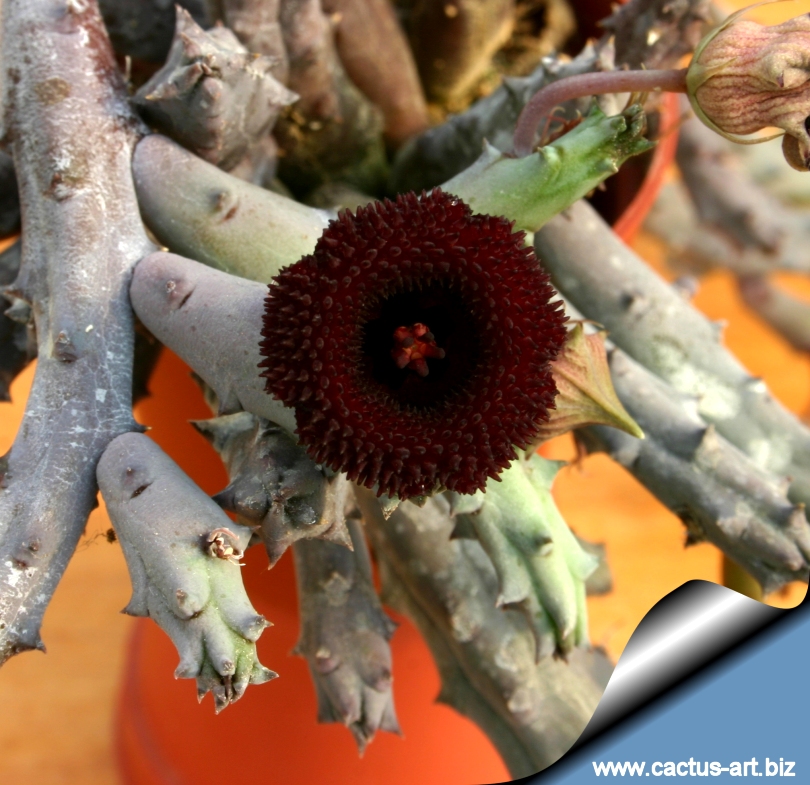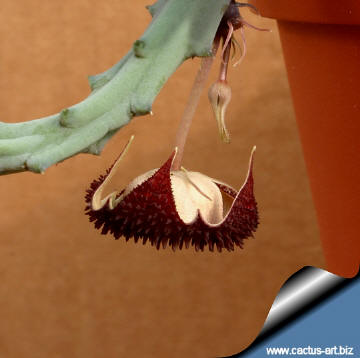|
|
|

Flowers are very dark
purple
|
|
|
|
 |
Cultivation:
Spring: When winter ends and they begin to
grow again, they will require much water and soaking the pots will
no longer put the plants at risk for
rot. In the spring they will grow well in
partial shade and leaving them out in the rain may provide them
with the water they need.
Summer: In the summer months they will tolerate heavy
rain, but will be just as happy if the season is
dry. It's best to sort out the
stems while the plants are
resting in the summer before they begin their autumnal
growth cycle. They will tolerate very hot weather outdoors
as long as they are kept in
filtered light and this will encourage them to
flower in the Autumn. They also enjoy some
fertiliser. Moving the plants as they are developing
buds may cause them to spontaneously
abort the flowers all together.
Autumn: In the fall keep them outdoors until the night time
temperatures drop below the 5°C.
Winter: Winter care presents no problems at 5°-10° C with
plenty of light. As soon as they are flowered be sure to take extra
precautions to keep them
dry, because damp cool conditions when the plants are
resting is an invitation to fungal
infections, but - according to temperatures –some occasional lit
watering may be useful
|
Propagation: Easiest with stem
cuttings. Allow cuttings to
dry a day before planting.
Stems must be laid (Not buried) on gritty
compost and will then
root from the underside of the stems. It can also be increased from
seeds
sowing in spring in moist, sandy
peat moss. Barely cover
seeds. Seeds
germinate quickly.
In any
season it's best to lay the stems out for several days before
replanting them and then pot them only in dry
soil and with hold any water until they begin to
shrivel or start growing again.
Potting medium: Since roots are quite shallow, use a
cactus mix or add extra
perlite or
pumice to regular soil potting soil. A gritty, very free-draining
compost is suitable, and
clay pots help the plants to dry out between watering.
Re-pot every 2 years.
Pest and
diseases: Huernia are generally fairly easy to grow, especially
if kept pest-free. They are very
susceptible to stem and root
mealy bugs, and damage from these may well initiate fungal
attack. Any time when there is a
dead or dying stem in the pot it is important to remove it
immediately and completely before other
healthy stems can become
ill too, isolate the healthy parts, dry them off, and
re-root them in new compost.
|
|


Advertising
|
|
|
|
|